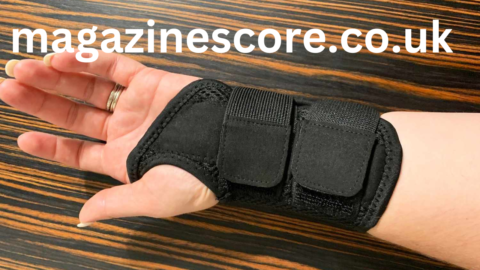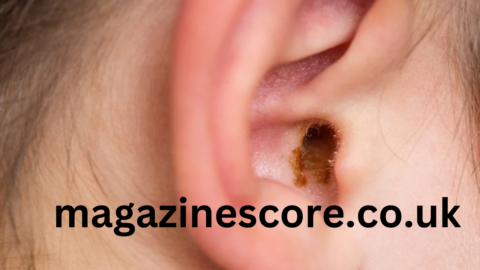Introduction to Blood Type Punnett Squares
When diving into the fascinating world of genetics, you’ll encounter a powerful tool known as the Blood Type Punnett Squares. This seemingly simple diagram is vital for predicting how blood types are passed down from parents to offspring. Blood type genetics isn’t just a scientific curiosity but holds real-world significance in medicine, forensics, and even in understanding our ancestry.
What is aBlood Type Punnett Squares?

A Blood Type Punnett Squares is a chart used to predict the possible genetic outcomes of blood types based on the genetic makeup of the parents. Essentially, it’s a matrix that helps visualize how different allele combinations can result in various blood types in offspring.
Importance in Genetics
Understanding how blood types are inherited is crucial for several reasons. In medicine, it’s essential for ensuring compatibility in blood transfusions and organ transplants. Forensic scientists use it to solve cases involving blood evidence. Additionally, it provides valuable insights into genetic inheritance patterns, helping us understand hereditary conditions and traits.
Overview of Blood Types
Human blood types are categorized based on the presence or absence of specific antigens on the surface of red blood cells. The primary blood type systems are the ABO system and the Rh factor. These combinations determine your blood type, which is crucial for matching blood in medical procedures and understanding family genetics.
Basic Genetics Refresher
Before we delve into how to create and interpret Punnett squares, it’s helpful to review some foundational genetics concepts.
Genes and Alleles
Genes are segments of DNA that encode specific traits. Alleles are different forms of a gene. For example, in the ABO blood group system, the three main alleles are A, B, and O. Each individual inherits two alleles for each gene—one from each parent.
Dominant vs. Recessive Traits
In genetics, traits can be dominant or recessive. Dominant traits require only one copy of the allele to be expressed, while recessive traits need two copies. For blood types, A and B are dominant, whereas O is recessive. This means that A and B blood types will show if either parent carries the A or B allele, whereas O blood type will only appear if both alleles are O.
Genotype vs. Phenotype
The genotype refers to the genetic makeup of an individual (e.g., AO or BO), while the phenotype is the observable trait (e.g., blood type A or B). Understanding these concepts is essential for using Punnett squares effectively.
Blood Types and Their Genetics
The ABO Blood Group System
The ABO blood group system divides blood into four main types: A, B, AB, and O. This classification is based on the presence or absence of A and B antigens on red blood cells. The genotypes for these blood types are:
- Type A: AA or AO
- Type B: BB or BO
- Type AB: AB
- Type O: OO
The Rh Factor (Positive and Negative)
In addition to the ABO system, the Rh factor classifies blood as Rh positive (Rh+) or Rh negative (Rh-). This factor is another antigen found on red blood cells and is inherited separately from the ABO blood types. Rh+ is dominant over Rh-.
Combining ABO and Rh Factors
To determine a person’s full blood type, both the ABO group and Rh factor are considered. For example, a person could have type A positive (A+) or type O negative (O-). Combining these factors requires considering both systems’ inheritance patterns.
Creating a Punnett Square
Step-by-Step Guide to Drawing a Punnett Square
Creating a Punnett square is a straightforward process:
- Identify Parental Genotypes: Determine the genotypes of the parents. For example, if both parents are heterozygous for blood type A (AO), this will be the starting point.
- Set Up the Square: Draw a grid. For a simple cross between two alleles, a 2×2 grid is typically used.
- Fill in the Grid: Write one parent’s alleles along the top of the grid and the other parent’s alleles along the side. Combine these alleles in each cell to show possible genotypes for the offspring.
- Determine Offspring Genotypes: The filled-in grid will display all potential genotypes for the offspring, which can then be used to determine blood types.
Understanding the Grid Layout
The grid layout of a Punnett square helps visualize all possible combinations of alleles from the parents. Each cell represents a potential genotype of the offspring, allowing you to see the probabilities of different blood types.
Filling in the Genotypes
To fill in the Punnett square, combine the alleles from the top row and the side column. For instance, if one parent has genotype AO and the other has genotype BO, you will fill in the grid with combinations like AB, AO, BO, and OO.
Examples of Blood Type Punnett Squares
Example 1: Crossing Two Heterozygous Parents
Consider two parents with genotype AO (type A blood) and BO (type B blood). Setting up a Punnett square:
- Parent 1 Alleles (AO): A, O
- Parent 2 Alleles (BO): B, O
The resulting grid will show:
- AB
- AO
- BO
- OO
This indicates the offspring could have type AB, type A, type B, or type O blood, with each having a 25% chance.
Example 2: A Rh Positive and Rh Negative Parent
If one parent is Rh+Rh+ (homozygous positive) and the other is Rh-Rh- (heterozygous negative), the Punnett square will show that all offspring will inherit at least one Rh+ allele, making them Rh+ overall.
Example 3: AABB x Aabb Cross
For a cross between AABb (type A) and Aabb (type A), the Punnett square will include combinations of:
- AB
- Ab
- Ab
- ab
This will help in predicting possible blood types, considering both ABO and Rh factors if included.
Interpreting Punnett Square Results
Reading the Probabilities
Once you have filled in the Punnett square, you can interpret the results to determine the probability of each blood type in the offspring. For instance, if you get four different genotypes, each genotype has a 25% chance.
What the Results Mean for Offspring Blood Types
Interpreting the Punnett square results helps predict the possible blood types of offspring, which is important for medical reasons such as transfusion compatibility and understanding genetic conditions.
Calculating Likelihoods
To calculate the likelihood of each blood type, count the number of occurrences of each genotype in the Punnett square and divide by the total number of outcomes. This provides a percentage chance for each blood type.
Applications of Blood Type Punnett Squares
Medical Applications
In medicine, understanding blood type inheritance is crucial for safe blood transfusions and organ transplants. Punnett squares help predict compatibility, ensuring that donated blood matches the recipient’s blood type.
Forensic Science
In forensic science, blood type Punnett squares can help determine familial relationships or identify suspects based on blood evidence. They provide valuable information in criminal investigations and paternity tests.
Ancestry and Genetic Testing
For those interested in ancestry and genetic testing, Punnett squares can offer insights into inherited traits and blood type patterns. This can enhance understanding of family history and genetic predispositions.
Common Misconceptions
Misunderstanding Blood Type Inheritance
A common misconception is that blood type inheritance is always straightforward. In reality, multiple alleles and inheritance patterns can complicate predictions, especially when considering additional factors beyond ABO and Rh.
Mistakes in Drawing Punnett Squares
Errors can occur if the Punnett square is not accurately drawn or if alleles are not properly represented. Ensure each allele combination is considered, and double-check the grid for accuracy.
Clarifying Rh Factor Confusions
Another area of confusion is the Rh factor. Remember that Rh+ and Rh- are inherited separately from the ABO blood types. Understanding this separation helps clarify how Rh status is determined.
Advanced Topics
Inheritance Patterns Beyond ABO and Rh
Beyond the ABO and Rh systems, there are other blood group systems and genetic factors influencing blood types, such as the Kell, Duffy, and Kidd systems. These additional systems provide a more comprehensive view of blood type inheritance.
Gene Interactions and Modifications
Gene interactions, like epistasis, can modify the expression of blood-type genes. These interactions add complexity to predictions and require a deeper understanding of genetic mechanisms.
The Role of Environment in Genetic Expression
While genetic inheritance plays a significant role in determining blood type, environmental factors can also influence gene expression. Understanding this interplay helps provide a more complete picture of genetic outcomes.
Practical Tips for Using Punnett Squares
Tips for Accurate Results
For accurate results when using Punnett squares, ensure you correctly Blood Type Punnett Squares identify the alleles of the parents and accurately draw the grid. Double-check your calculations and consider using online tools for complex crosses.
Common Pitfalls and How to Avoid Them
Avoid common pitfalls such as mislabeling alleles or Blood Type Punnett Squares overlooking additional Blood Type Punnett Squares genetic factors. Verify each step and use reliable resources for complex genetic scenarios.
Tools and Resources for Learning
Several educational tools and resources are available to Blood Type Punnett Squares help understand and use Punnett squares effectively. Online calculators, educational websites, and interactive diagrams can enhance learning and accuracy.
Conclusion
Understanding blood type Punnett squares provides valuable insights into genetic inheritance, particularly concerning blood types. This knowledge is crucial for medical applications, forensic science, and genetic testing. By mastering Blood Type Punnett Squares squares, you can predict and analyze blood type inheritance with confidence, helping to address practical concerns and deepen your understanding of genetics.
FAQs
What if my parents have different blood types?
If your parents have different Blood Type Punnett Squares, a Punnett square can help predict the possible blood types you might inherit. By considering the genotypes of both parents, you can determine the probabilities of different blood types.
Can a Punnett Square predict rare blood types?
Yes, a Punnett square can predict rare blood types by including all possible allele combinations. However, rare blood types may require considering additional genetic factors beyond the ABO and Rh systems.
How can Punnett Squares help in medical genetics?
Punnett squares help in medical genetics by predicting blood type compatibility for transfusions and organ transplants. They also assist in understanding hereditary conditions and genetic risks.
Are there any exceptions to the basic inheritance rules?
While Punnett squares provide a Blood Type Punnett Squares solid framework for understanding inheritance, exceptions can occur due to complex genetic interactions, mutations, or additional blood group systems.
How accurate are Punnett Squares in real-life scenarios?
Punnett squares offer a Blood Type Punnett Squares theoretical prediction of genetic outcomes. While they are accurate for predicting probabilities, real-life results can be influenced by various factors, including environmental influences and genetic variability.







